Keys to Determine Value
- Use performance data covering a period of years.
- Use an area definition that is larger than “your little corner of the world.”
- Use a package of genetically diverse hybrids.
- Include a control treatment and replication when evaluating a new agronomic practice.
- These steps can improve the predictability and consistency of trial results.
Multiple Environments are Critically Important
- A well-run side-by-side yield comparison, with fairly uniform soils and consistent best management practices, may measure what happened in that part of the field with reasonable accuracy, but testing only one environment is not a good predictor of future performance.
- Even if management practices and soil type remain the same, the growing environment is a constantly moving target.
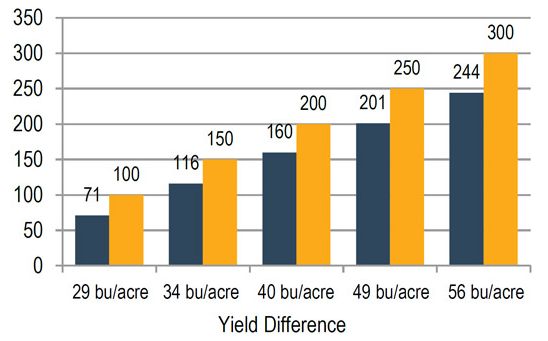
Figure 1. Yield difference needed to be significant (0.05 probability) in a single environment.
| Causes of Single-Location Variability | |
|
|
Testing in Variable Fields
GPS-based planters, yield monitors, and analysis tools can make field variation useful in the testing process.
- Areas of known field variation are grouped into management zones.
- Test strips are positioned to run through these zones.
- This allows comparisons in multiple environments in the field.
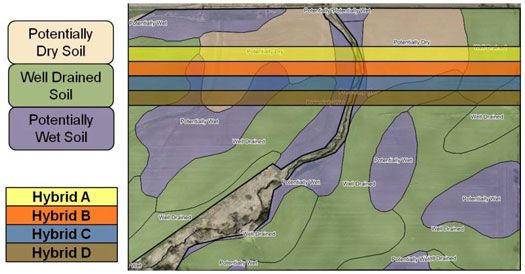
Figure 2. Hybrid strip trial layout in which the trial runs across multiple management zones assigned based on soil moisture characteristics.
For split-planter trials evaluating agronomic practices:
- Avoid testing too many variables at once, which can confound results.
- Include a check where the agronomic practice was not applied.
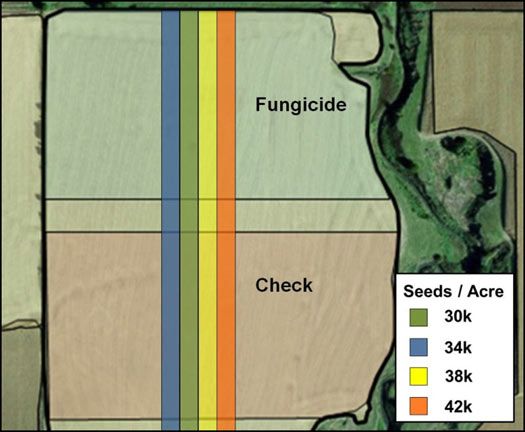
Figure 3. Agronomic trial with 2 variables, seeding rate and foliar fungicide treatment, that includes a non-treated check.
Least Significant Difference (LSD)
LSD is the minimum yield difference needed between two hybrids or agronomic practices to ensure there is a real difference as opposed to a yield difference due to chance alone.
- The LSD is strongly influenced by the number of locations used to compare the 2 hybrids or agronomic practices (Figure 4).
- Consider a minimum of 10 or more in one year or over a period of years.

Figure 4. The least significant difference (LSD) is strongly influenced by the number of locations used to compare 2 hybrids or agronomic practices.
Reasons to Consider Multiple Locations
- Predict what will win in next year’s environment.
- Sample a wider range of environments.
- Seldom will next year be like this year.
- Environment affects performance more significantly than individual management practices.
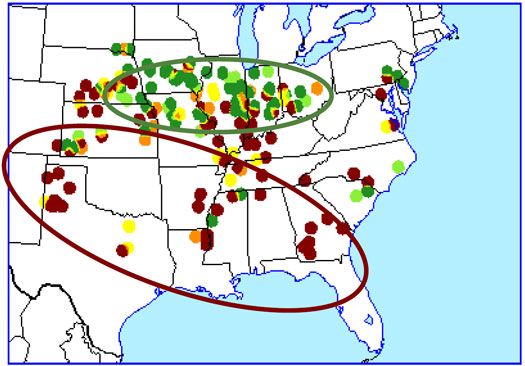
Figure 5. Yield difference map for 2 hybrids in which 1 hybrid generally performed better in the central Corn Belt (green dots) while the other performed better in the southern U.S. and western Corn Belt (red dots). Some variability in performance was also observed within these 2 regions.
Percent Win Ratio by Yield Advantage
- Even with a 10 bu/acre yield advantage, almost 1 out of 4 growers will not experience the higher yielding hybrid or practice winning on their farm.
- Because their own farm environment produced results that are the exception, wide area data would have to be used by these growers to make the correct decision.
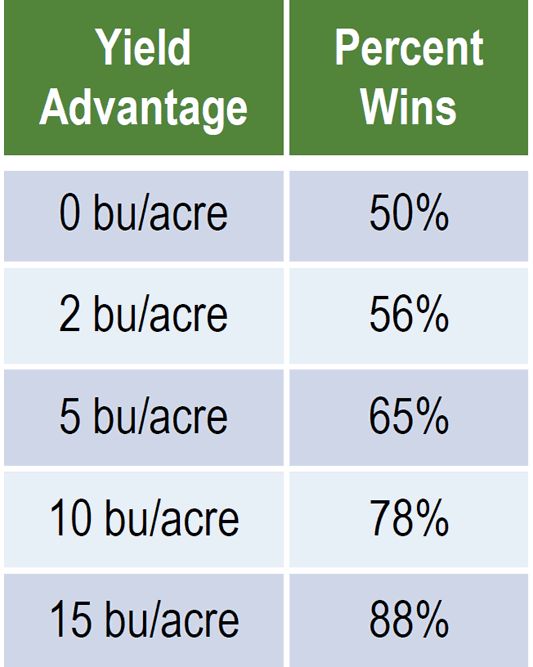
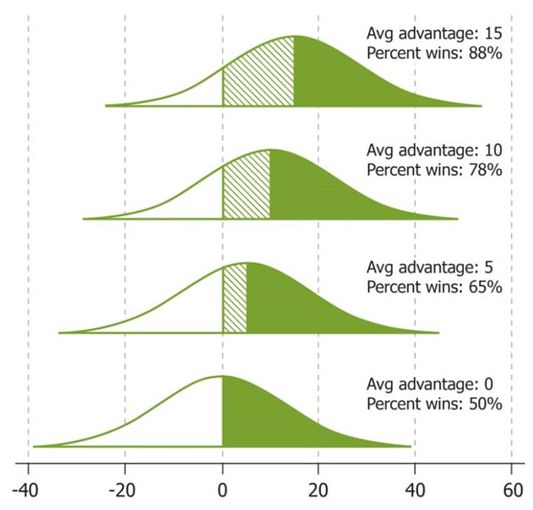
Distribution of yield advantage (std dev = 13)
Field Comparison Guidelines
- Compare hybrids/practices in same field with the same planting date, fertility, weed and pest control, tillage, and previous crop
- For strip plots where each strip will be measured as one unit:
- Select uniform location to minimize soil variation.
- Limit trial width and length to include only uniform soil.
- In yield monitor trials:
- Run strips perpendicular to the direction of field variation.
- Run strips through all management zones of interest.
- Evaluate location for irregularities.
- Compare hybrids of similar maturity.
- Limit comparisons to +/- 5 CRM (Central/South).
- Limit comparisons to +/- 3 CRM (Northern).
- If a wide range of maturities is desired, group hybrids of similar maturity and consider each group as a location.
- Determine validity of the comparison before the trial is harvested.
The foregoing is provided for informational use only. Please contact your Pioneer sales professional for information and suggestions specific to your operation. Product performance is variable and depends on many factors such as moisture and heat stress, soil type, management practices and environmental stress as well as disease and pest pressures. Individual results may vary.